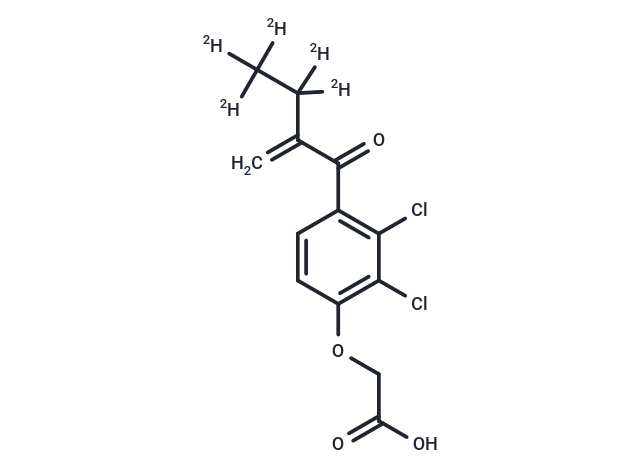Shopping Cart
- Remove All
 Your shopping cart is currently empty
Your shopping cart is currently empty

Ethacrynic acid, a diuretic, functions as an inhibitor of L-type voltage-dependent and store-operated calcium channels, facilitating the relaxation of airway smooth muscle (ASM) cells. It exhibits anti-inflammatory effects, notably reducing retinoid-induced ear edema in mice, and inhibits glutathione S-transferases (GSTs), making it a potent suppressor of the NF-kB signaling pathway. Additionally, ethacrynic acid modulates leukotriene formation. A variant, Ethacrynic acid D5, is distinguished by its deuterium labeling.

| Pack Size | Price | Availability | Quantity |
|---|---|---|---|
| 2 mg | TBD | 35 days |
| Description | Ethacrynic acid, a diuretic, functions as an inhibitor of L-type voltage-dependent and store-operated calcium channels, facilitating the relaxation of airway smooth muscle (ASM) cells. It exhibits anti-inflammatory effects, notably reducing retinoid-induced ear edema in mice, and inhibits glutathione S-transferases (GSTs), making it a potent suppressor of the NF-kB signaling pathway. Additionally, ethacrynic acid modulates leukotriene formation. A variant, Ethacrynic acid D5, is distinguished by its deuterium labeling. |
| Molecular Weight | 308.17 |
| Formula | C13H12Cl2O4 |
| Cas No. | 1330052-59-9 |
| Relative Density. | no data available |
| Storage | Powder: -20°C for 3 years | In solvent: -80°C for 1 year | Shipping with blue ice. |

Copyright © 2015-2025 TargetMol Chemicals Inc. All Rights Reserved.